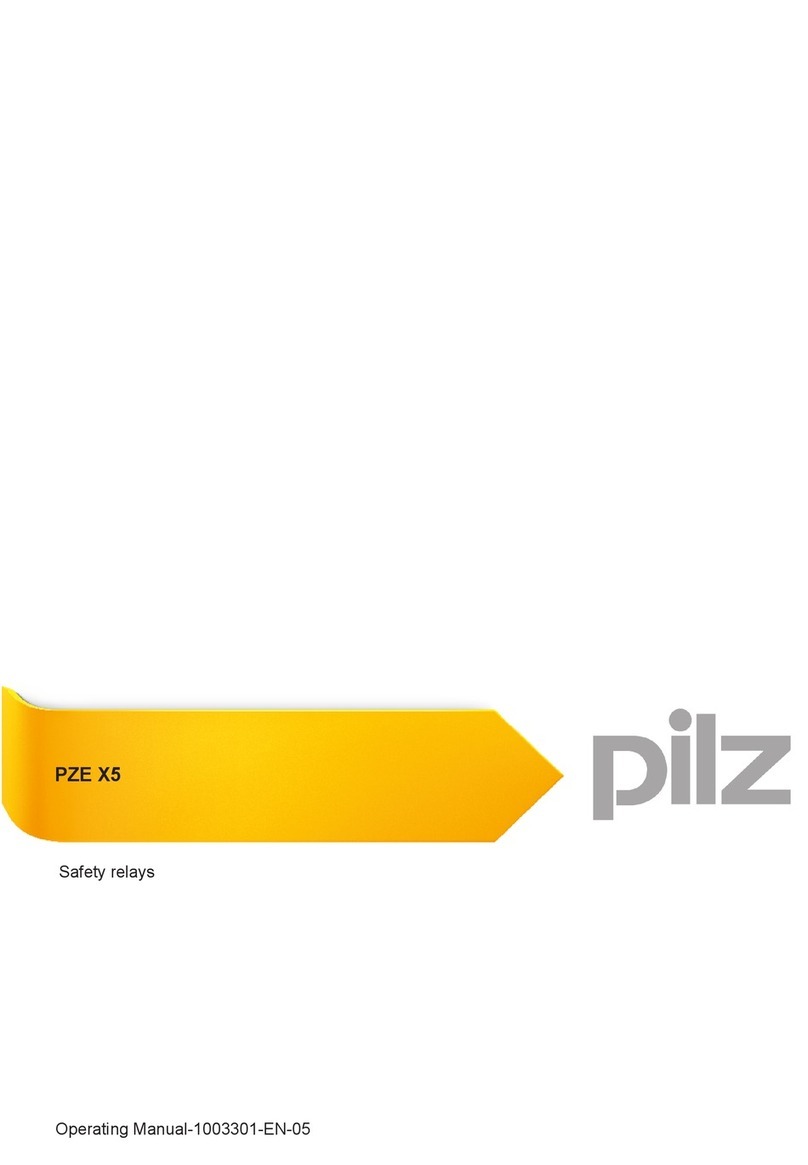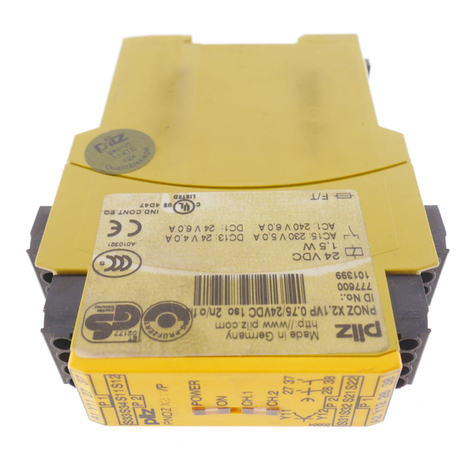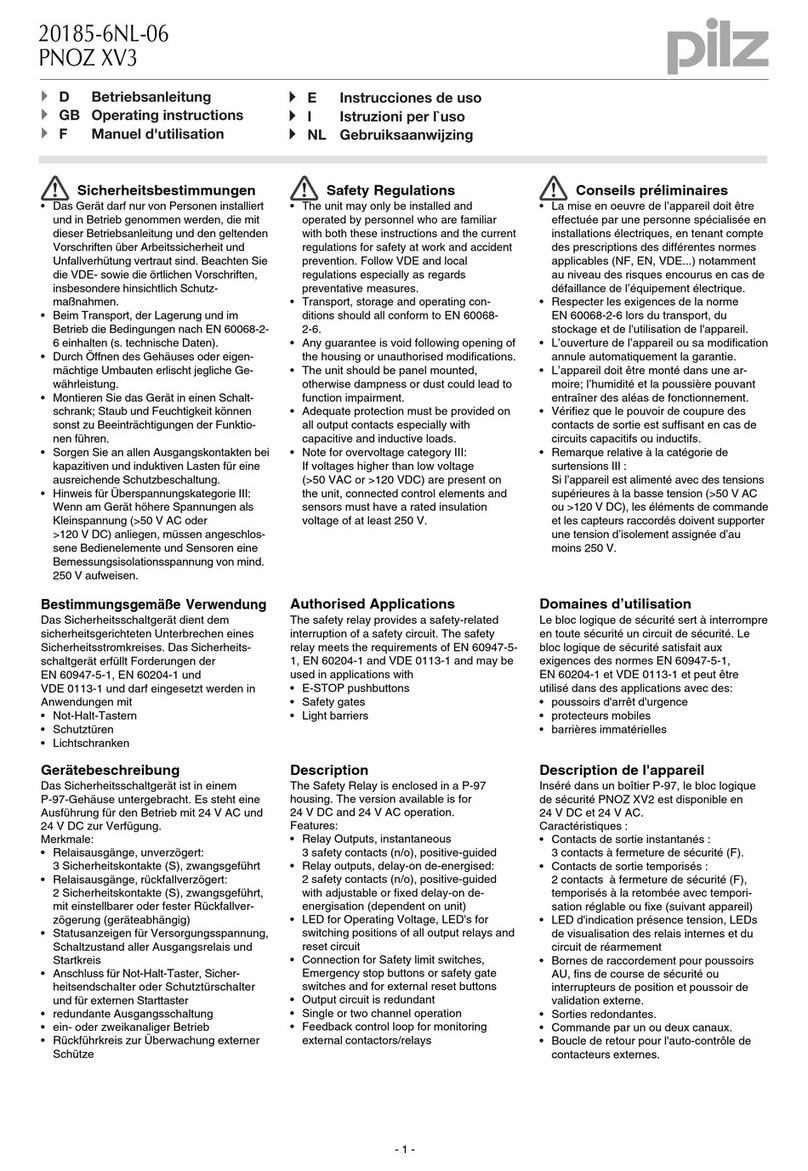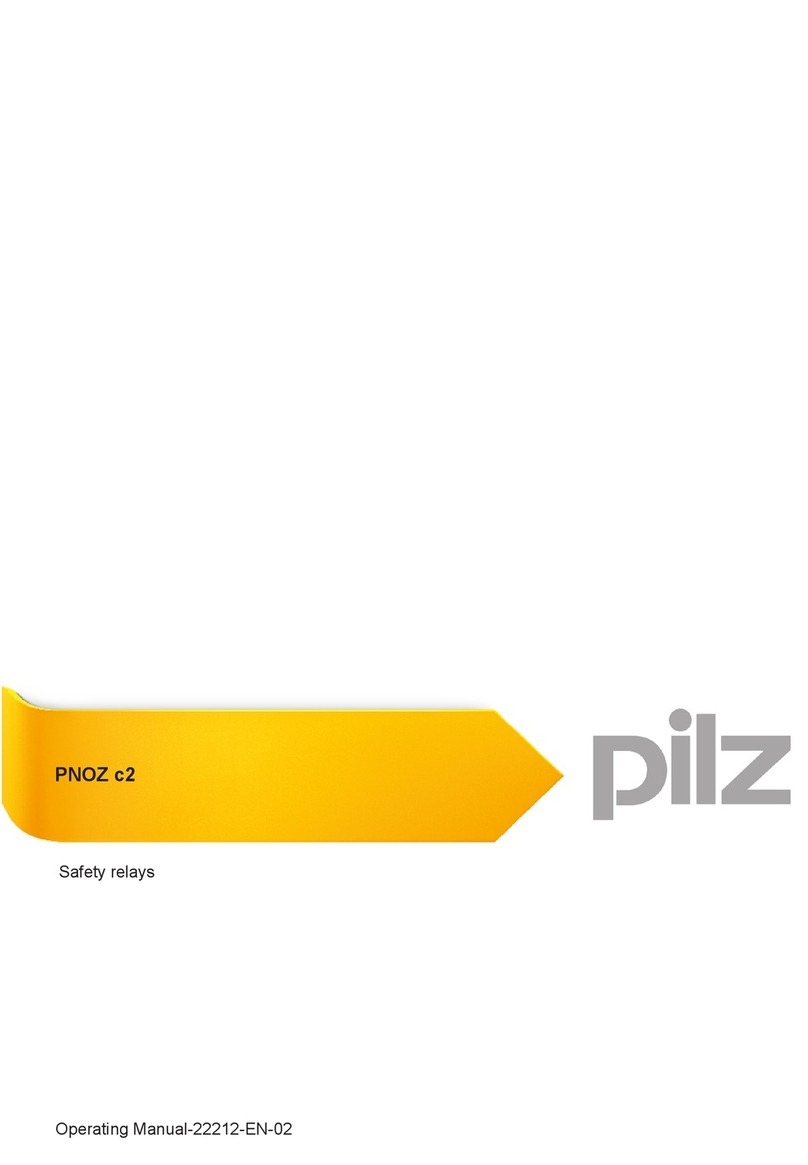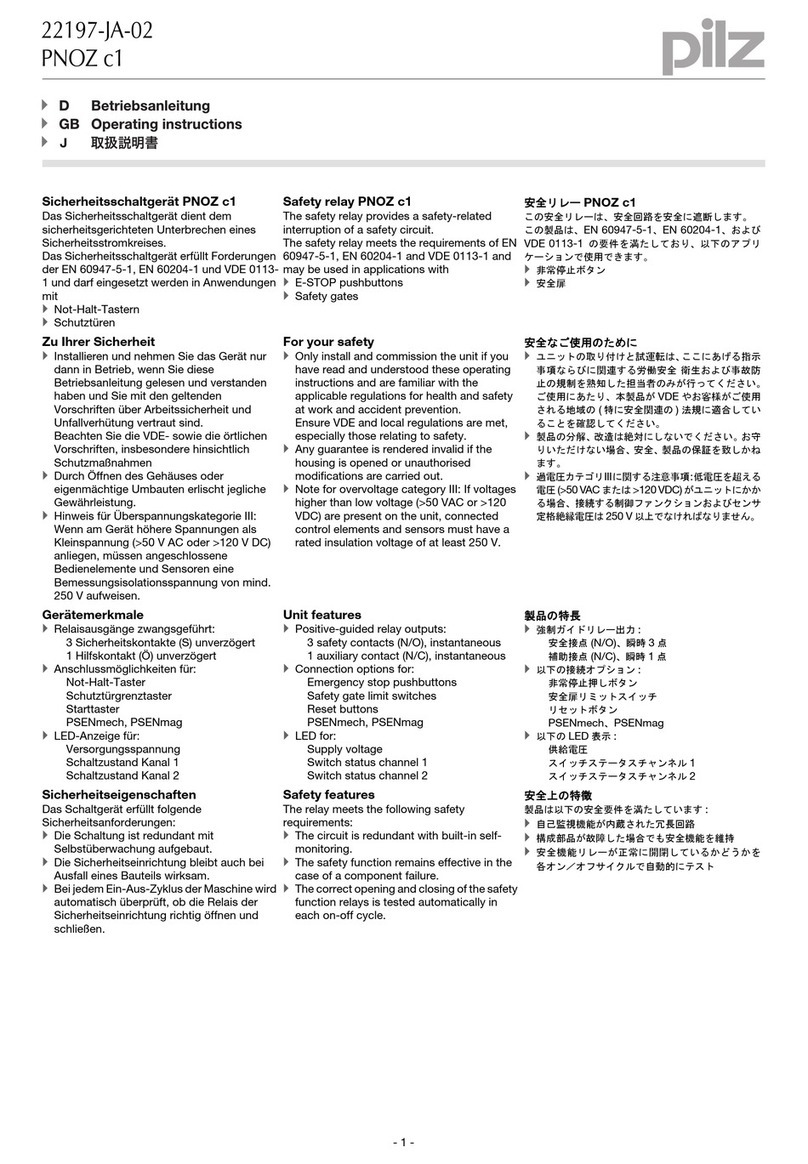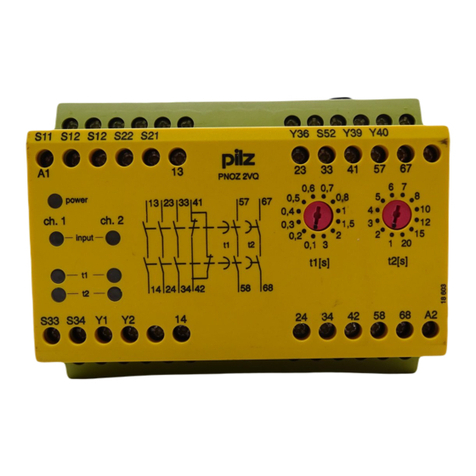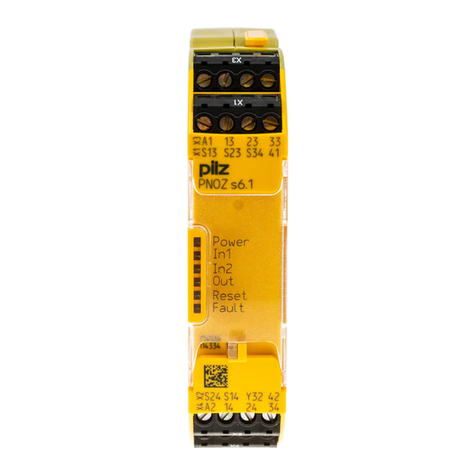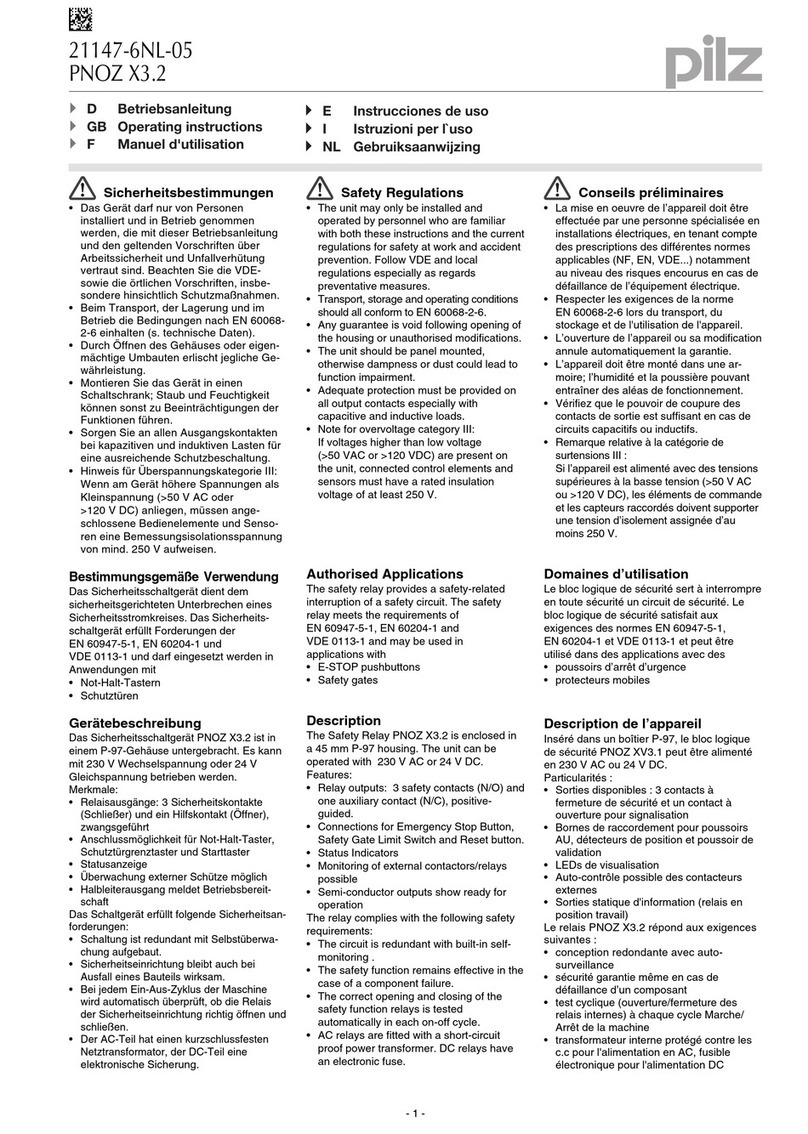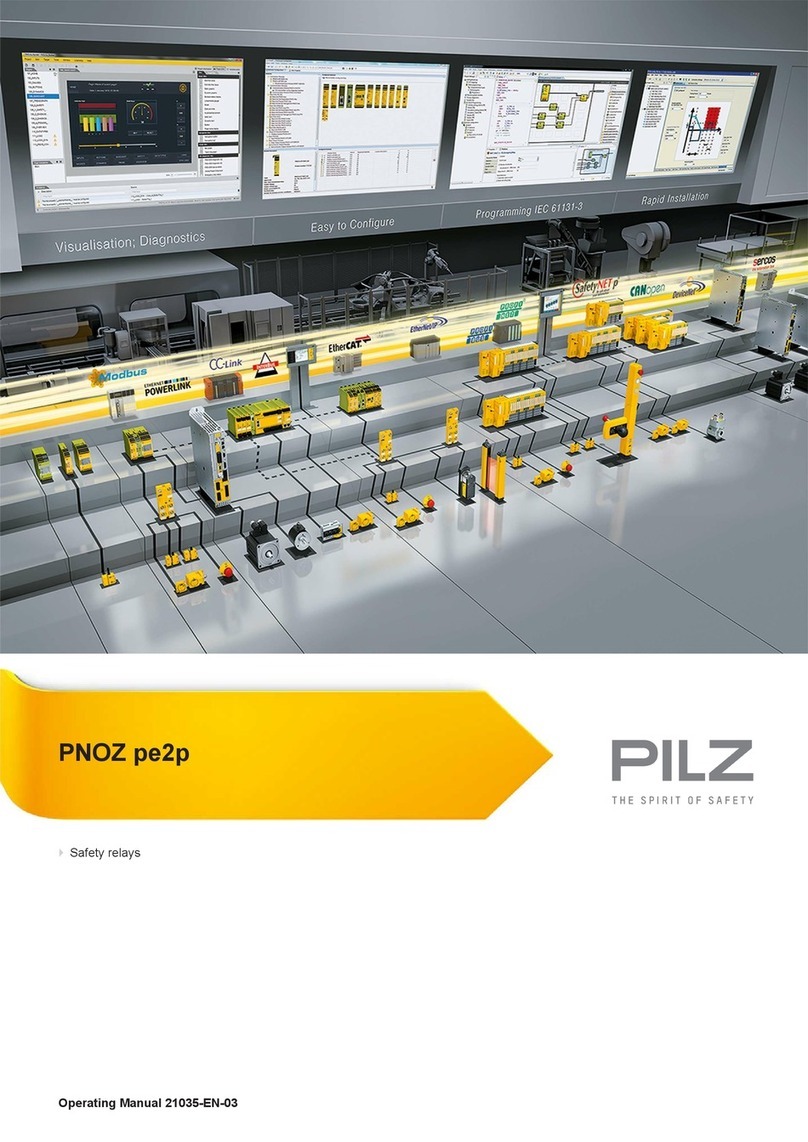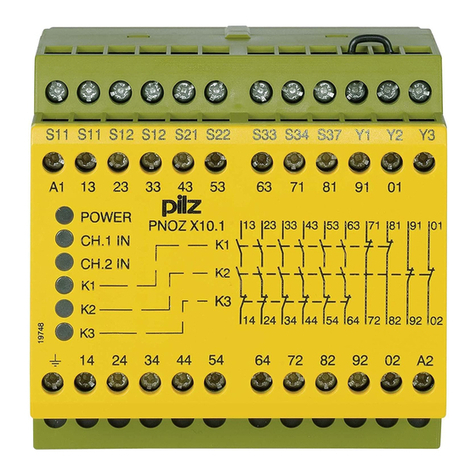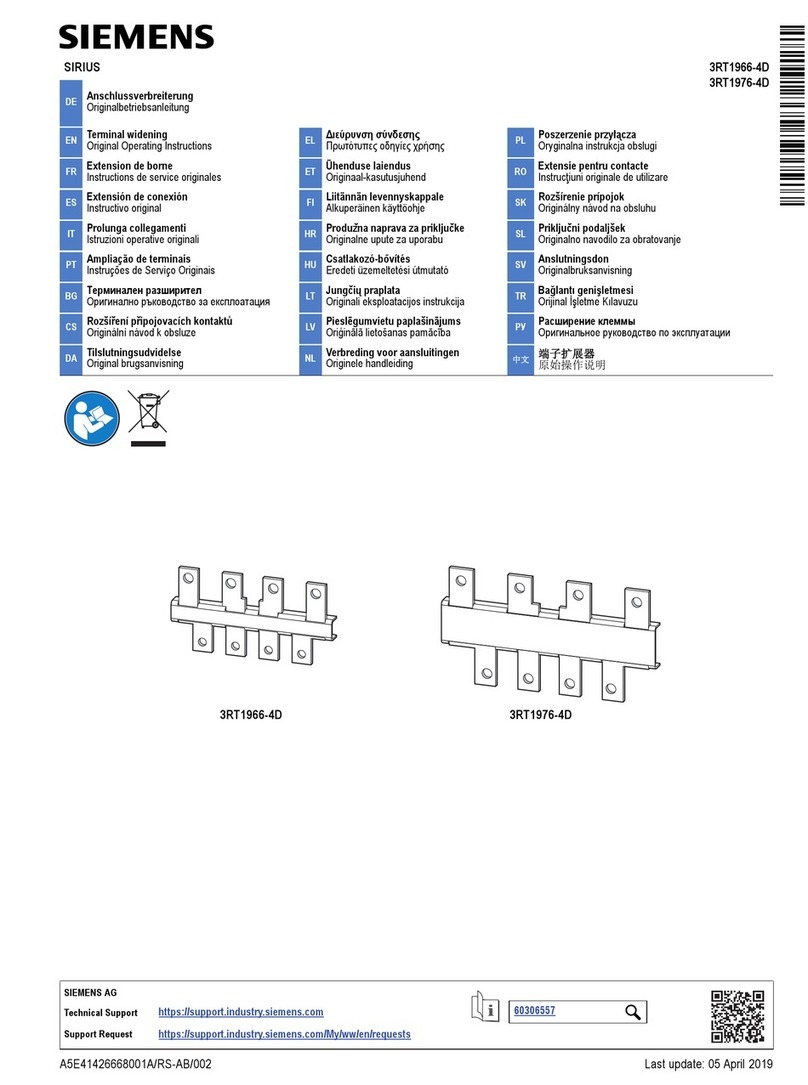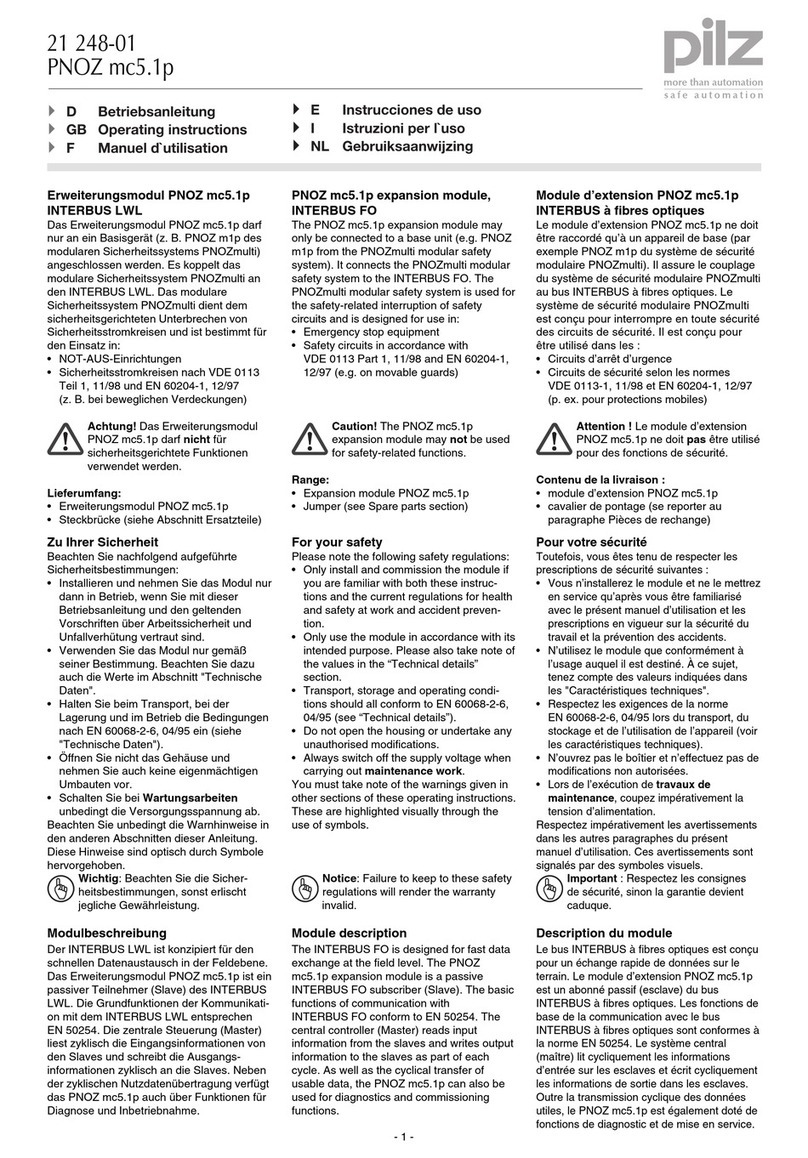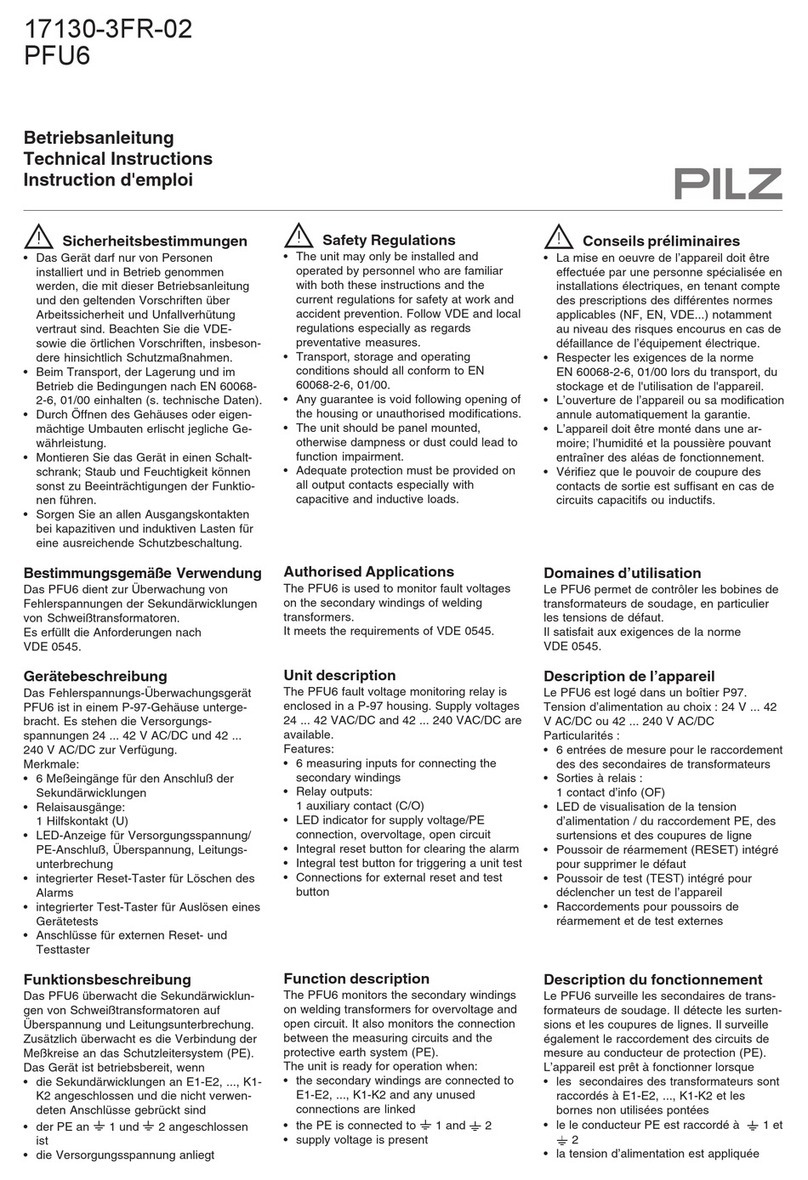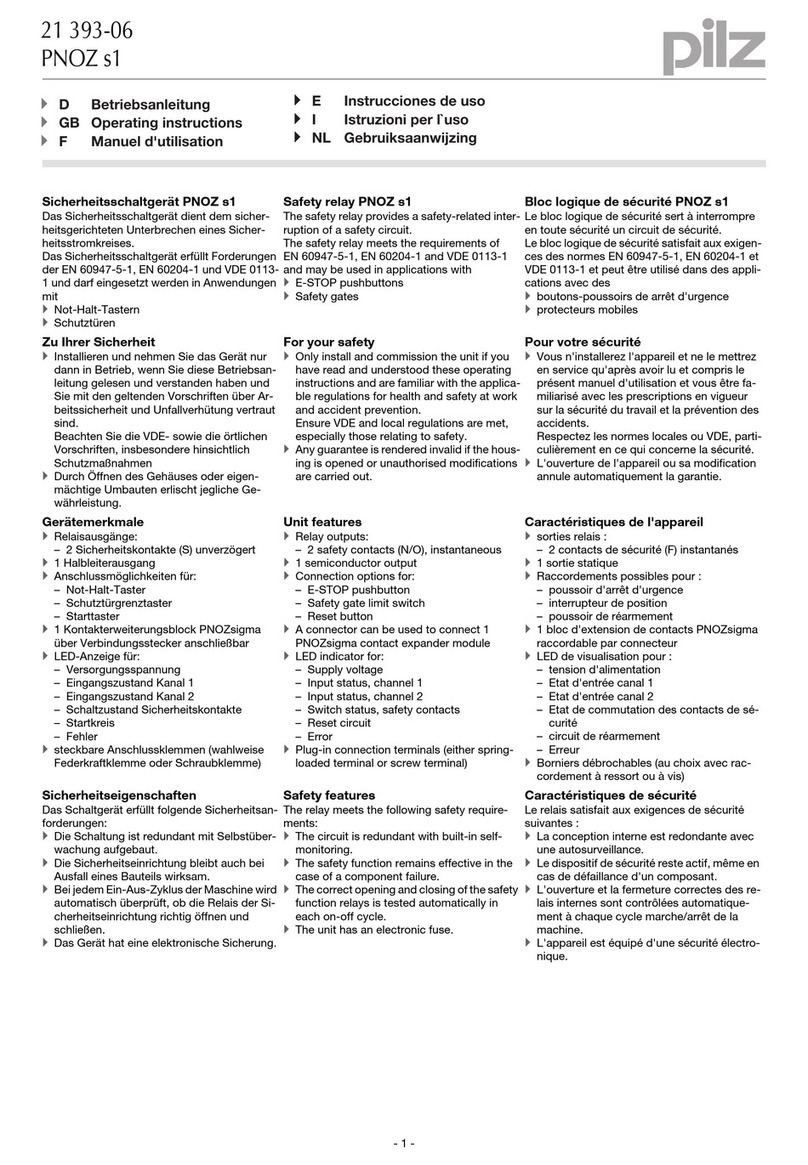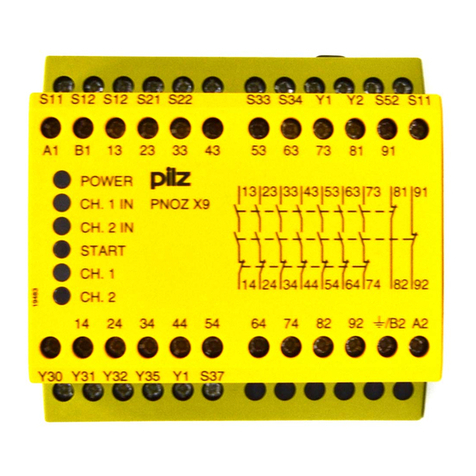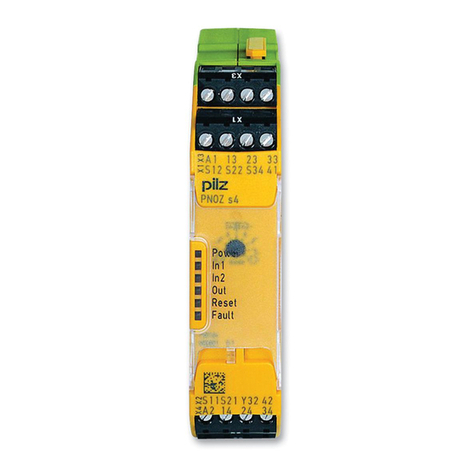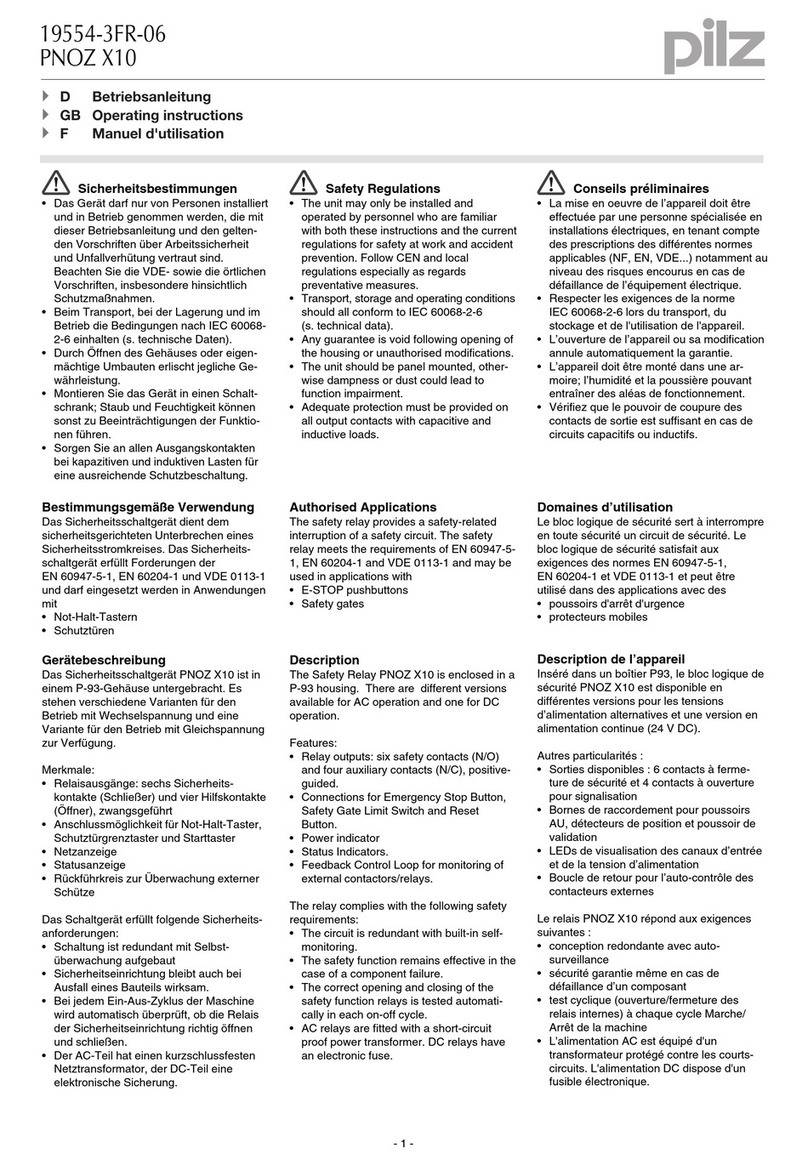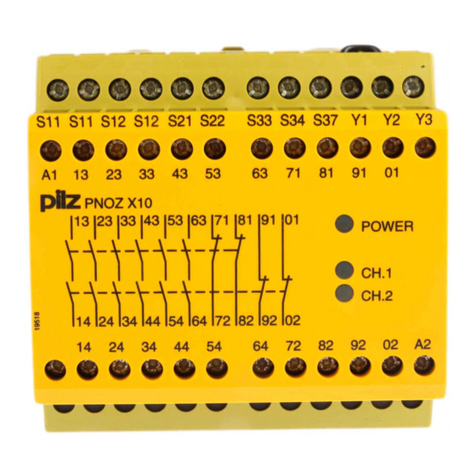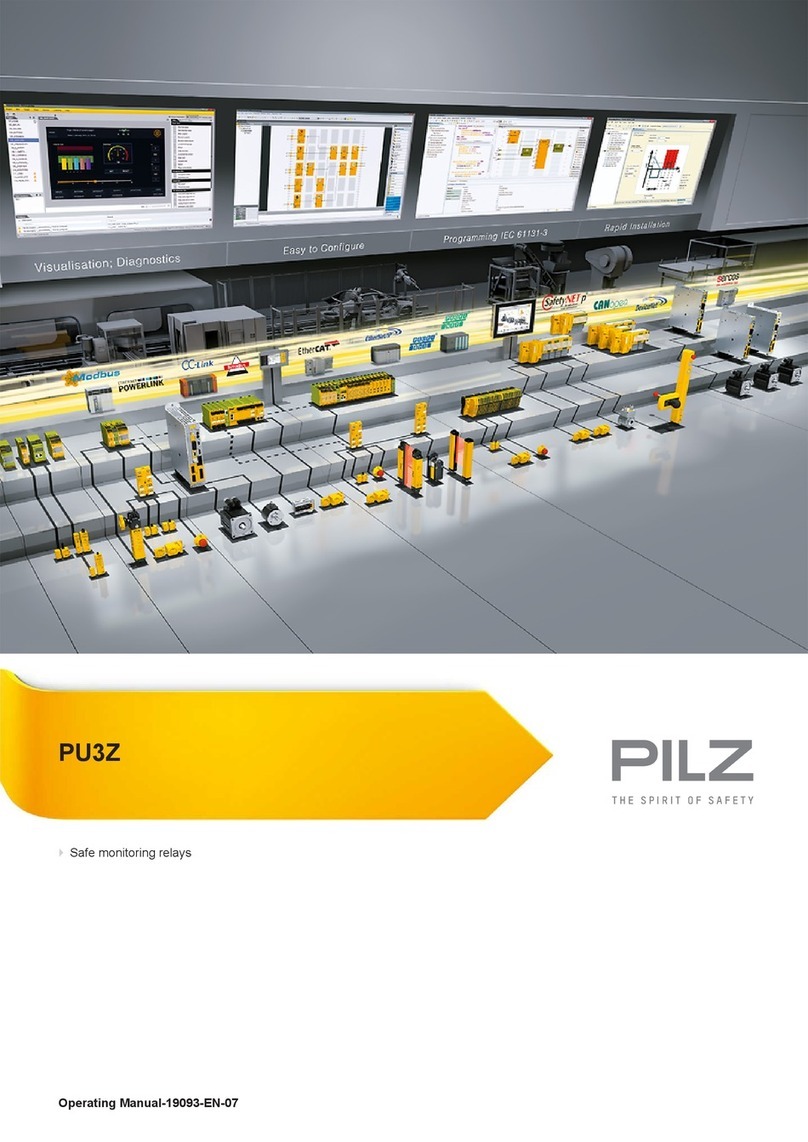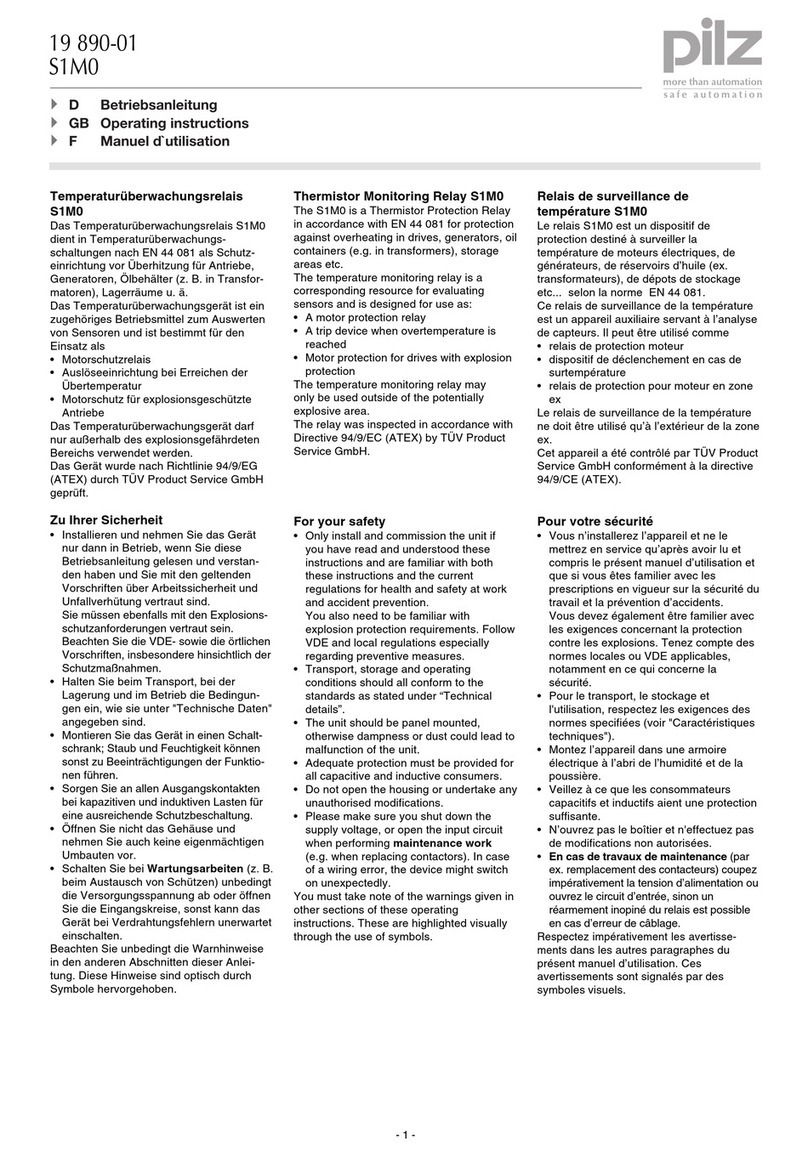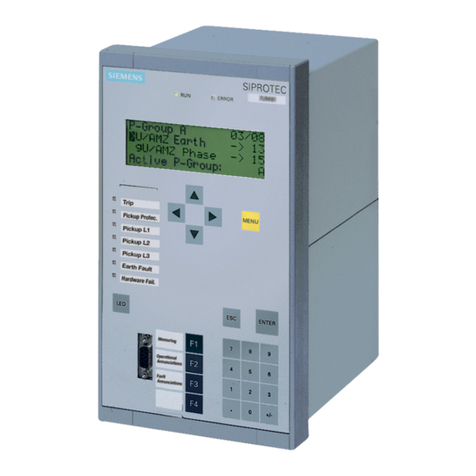
Contents
Operating Manual PNOZ 8
22152-EN-05 | 3
Introduction ............................................................................................................................4
Validity of documentation.......................................................................................................... 4
Using the documentation .......................................................................................................... 4
Definition of symbols................................................................................................................. 4
Safety ...................................................................................................................................... 5
Intended use ............................................................................................................................. 5
Safety regulations ..................................................................................................................... 5
Safety assessment ................................................................................................................... 5
Use of qualified personnel ........................................................................................................ 6
Warranty and liability ................................................................................................................ 6
Disposal .................................................................................................................................... 6
For your safety.......................................................................................................................... 6
Unit features ...........................................................................................................................7
Safety features ....................................................................................................................... 7
Block diagram/terminal configuration ................................................................................. 8
Types: AC ................................................................................................................................. 8
Type: DC................................................................................................................................... 8
Function Description ............................................................................................................. 9
Operating modes ...................................................................................................................... 9
Timing diagram ......................................................................................................................... 10
Installation ..............................................................................................................................10
Wiring ......................................................................................................................................11
Preparing for operation ......................................................................................................... 12
Operation ................................................................................................................................14
Status indicators ....................................................................................................................... 15
Faults – Interference .............................................................................................................. 15
Dimensions in mm .................................................................................................................15
Technical details ....................................................................................................................16
Safety characteristic data ......................................................................................................... 21
Supplementary data ..............................................................................................................21
Service life graph ...................................................................................................................... 22
Order reference ......................................................................................................................22
EC declaration of conformity ................................................................................................ 23
